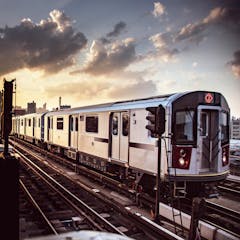
Articles sur Buses
Affichage de 1 à 20 de 42 articles

Amid bus route cuts and rail strikes, can the answer to our future public transport needs be found in the hi-tech prototypes being trialled around the UK?

Everyone likes getting something for nothing, but history shows why the math behind free public transit doesn’t add up.

High-quality bus service is the fastest route to rapid, comprehensive public transit in the United States. This country was once a leader in bus transit, and with adequate funding, it could be again.

The Victorian government has announced it is replacing the state’s public transport ticketing system. So what essential features should a state-of-the-art system offer users?

Public buses, subways and trains are relatively safe, fast and cheap. But competition from rideshares and concerns over COVID-19 will soon see some local agencies short of funds.

They look like conventional school buses, but electric versions are cleaner, quieter and cheaper to maintain. States, utilities and federal agencies are helping school districts make the switch.

London was rated 2021’s most congested city.

Two urban policy experts explain why taking down highways that have isolated low-income and minority neighborhoods for decades is an important part of the pending infrastructure bill.

Transport is the one sector where Australia hasn’t reined in the growth in greenhouse gas emissions. Electric cars will cut emissions but still leave us with all the other problems of car use.

In many cities contemplating new light rail systems, bus rapid transit offers a cheaper, faster and more flexible solution.

Long-overdue changes are afoot in Britain’s bus networks.

Recent federal mask mandates on all public transit have burdened bus drivers with difficult and sometimes dangerous duties to reduce the spread of the coronavirus.

Transportation planning for the elderly should consider their needs, including safe pathways and accessible vehicles.

Life cycle assessments of electric vehicles show that they cannot fully eliminate the greenhouse gas emissions of personal travel. We also need bikes, buses and trains to solve our climate problems.

A researcher explains what it will take to make sure children are reasonably safe from catching the coronavirus aboard school buses.

New bike lanes are a good idea for health and air quality, but the convenience of car travel for most journeys will remain.

As COVID-19 restrictions are eased, cities face crippling congestion if people shun crowded public transport. More frequent and faster services, using innovations like pop-up bus lanes, can avoid this.

Masks protect you from infection and protect others from getting sick. But authorities are leaving it up to individuals to decide if they want to wear masks on the bus or train. Here’s how to decide.

The pandemic has forced many people to shift from public transport to car travel. But is this likely to be permanent?

Social distancing isn’t really compatible with public transport – especially during peak times. So how can we stay safe if we’re starting to take public transport again?
